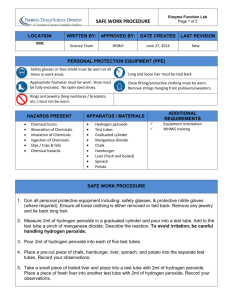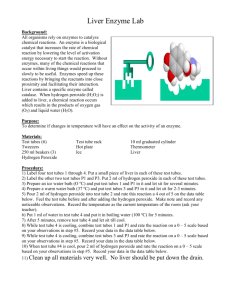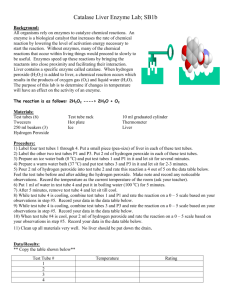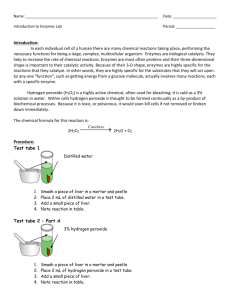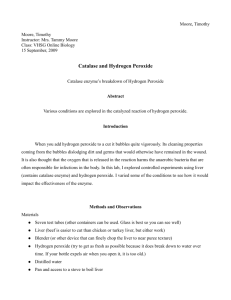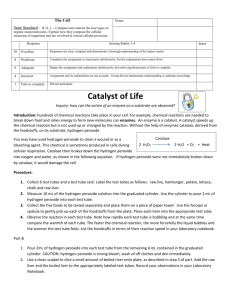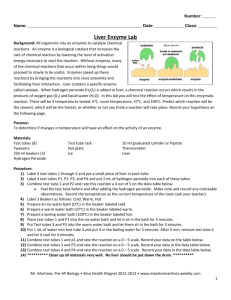Enzyme Lab - WordPress.com
advertisement
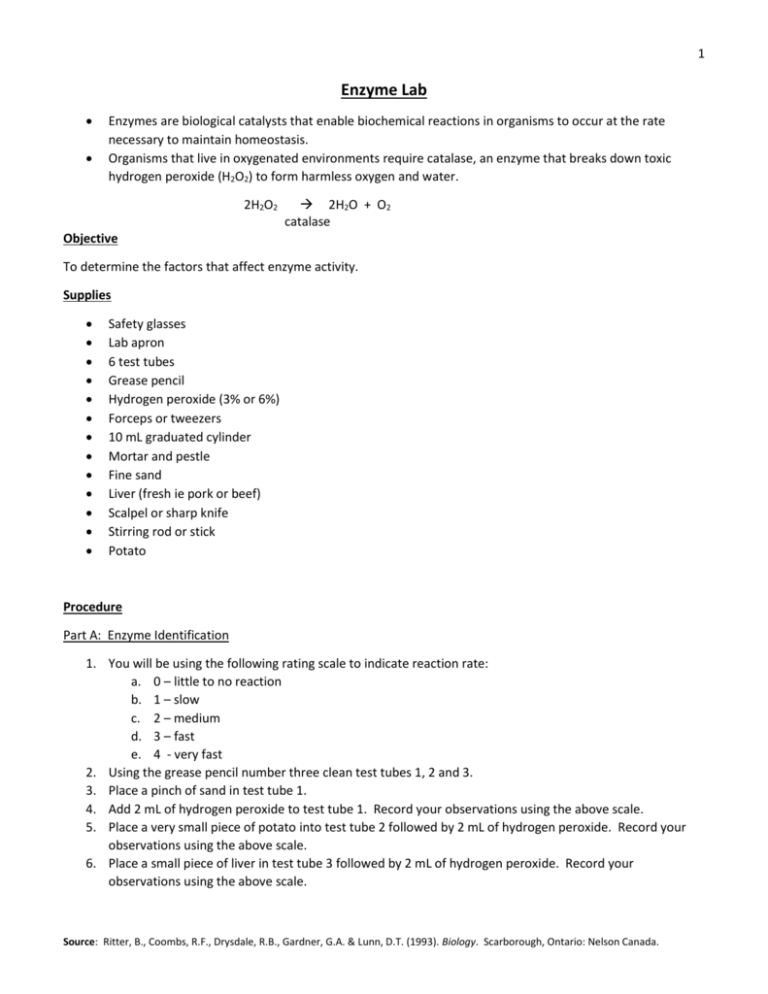
1 Enzyme Lab Enzymes are biological catalysts that enable biochemical reactions in organisms to occur at the rate necessary to maintain homeostasis. Organisms that live in oxygenated environments require catalase, an enzyme that breaks down toxic hydrogen peroxide (H2O2) to form harmless oxygen and water. 2H2O2 2H2O + O2 catalase Objective To determine the factors that affect enzyme activity. Supplies Safety glasses Lab apron 6 test tubes Grease pencil Hydrogen peroxide (3% or 6%) Forceps or tweezers 10 mL graduated cylinder Mortar and pestle Fine sand Liver (fresh ie pork or beef) Scalpel or sharp knife Stirring rod or stick Potato Procedure Part A: Enzyme Identification 1. You will be using the following rating scale to indicate reaction rate: a. 0 – little to no reaction b. 1 – slow c. 2 – medium d. 3 – fast e. 4 - very fast 2. Using the grease pencil number three clean test tubes 1, 2 and 3. 3. Place a pinch of sand in test tube 1. 4. Add 2 mL of hydrogen peroxide to test tube 1. Record your observations using the above scale. 5. Place a very small piece of potato into test tube 2 followed by 2 mL of hydrogen peroxide. Record your observations using the above scale. 6. Place a small piece of liver in test tube 3 followed by 2 mL of hydrogen peroxide. Record your observations using the above scale. Source: Ritter, B., Coombs, R.F., Drysdale, R.B., Gardner, G.A. & Lunn, D.T. (1993). Biology. Scarborough, Ontario: Nelson Canada. 2 Part B: Factors that Influence the Rate of Reaction 1. 2. 3. 4. 5. 6. 7. 8. Label two clean test tubes 4 and 5. Evenly divide the hydrogen peroxide in test tube 3 between test tube 4 and 5. Evenly divide the liver in test tube 3 between test tube 4 and 5. Place another small amount of liver in test tube 4 and record your observations based on the rating scale on the previous page. Pour 1 mL of new hydrogen peroxide into test tube 5. Record your observations using the rating scale on the previous page. Place a small amount of sand and a new piece of liver into a mortar and grind with a pestle to break the liver into small pieces. Label a clean test tube 6 and add 2 mL of hydrogen peroxide followed by the ground liver pieces. Record your observations using the rating scale on the previous page. Compare the reaction rates in test tube 3 and 6. Analysis Questions 1. 2. 3. 4. 5. What was the control in Part A? Explain the differences in reaction rate between the liver and potato. The reaction rates in test tubes 4 and 5 were different. Why? Explain the reason for the differences in reaction rates between the crushed and uncrushed liver. What would happen to the reaction rate if the liver was cooked, at a high temperature, before hydrogen peroxide was added to it? Source: Ritter, B., Coombs, R.F., Drysdale, R.B., Gardner, G.A. & Lunn, D.T. (1993). Biology. Scarborough, Ontario: Nelson Canada.

